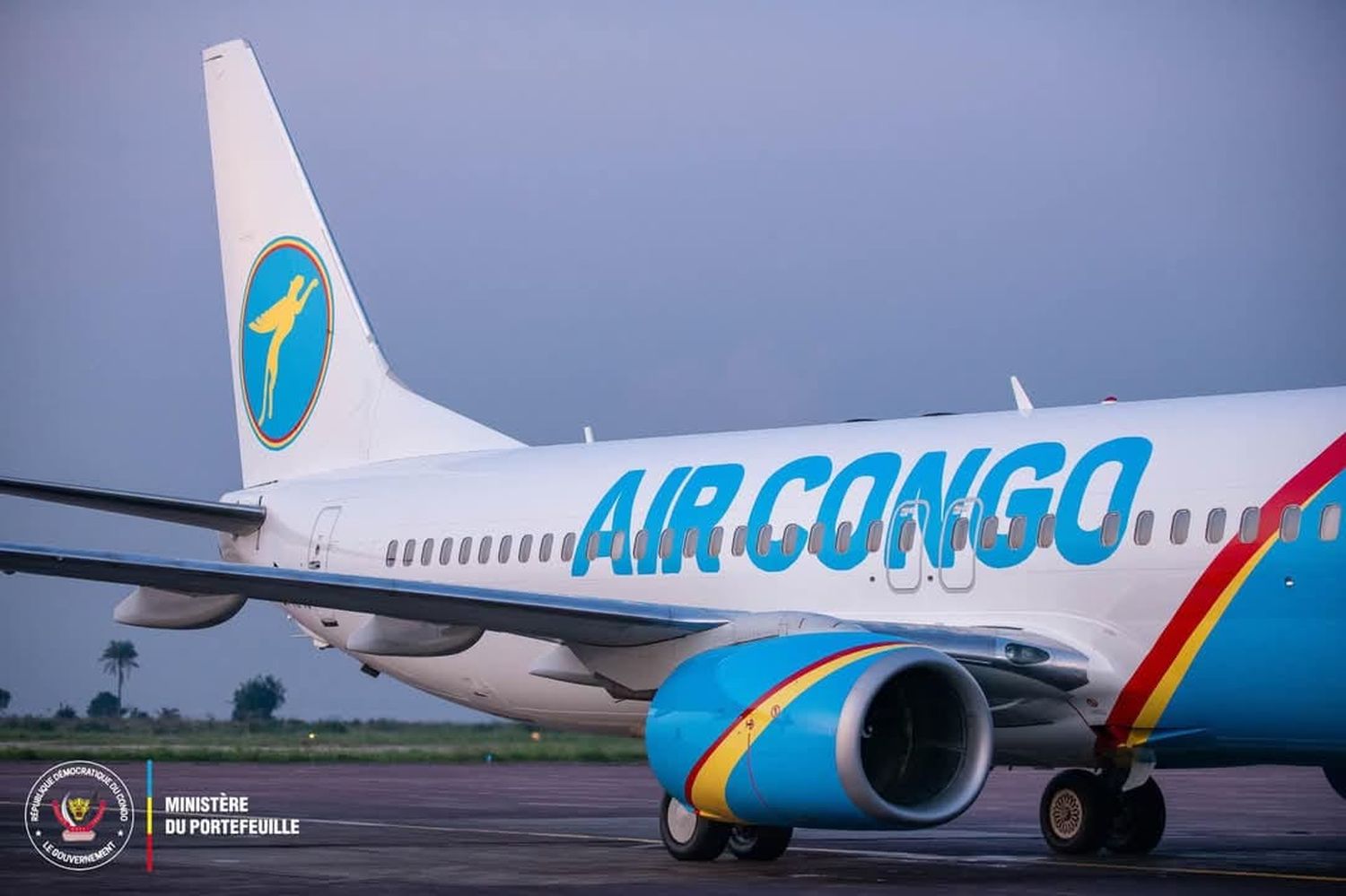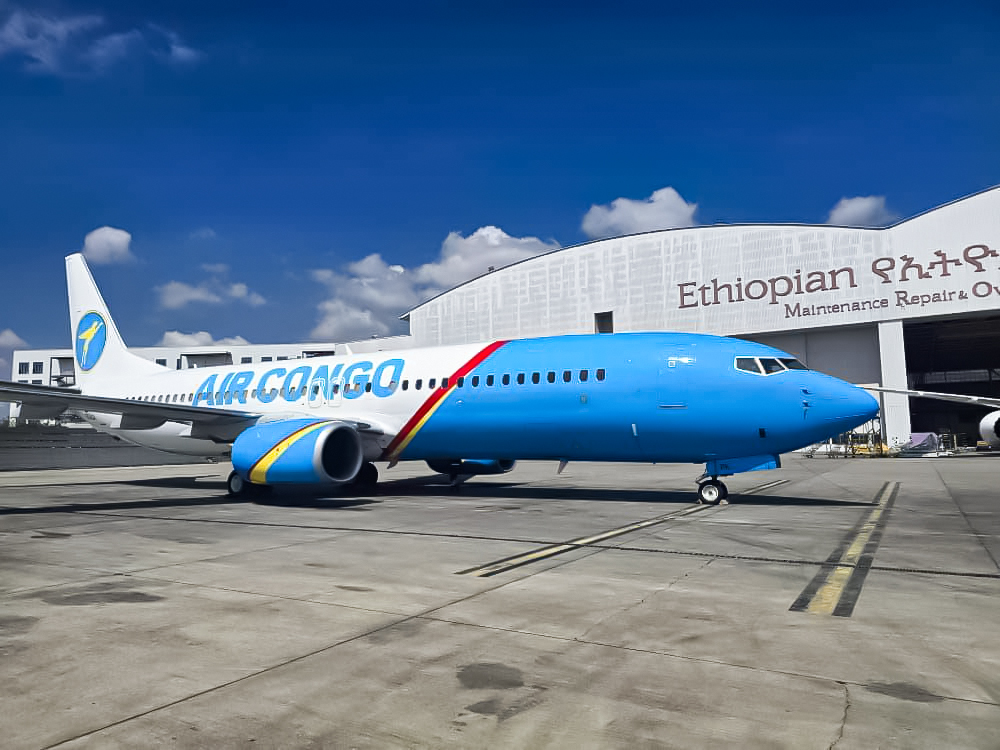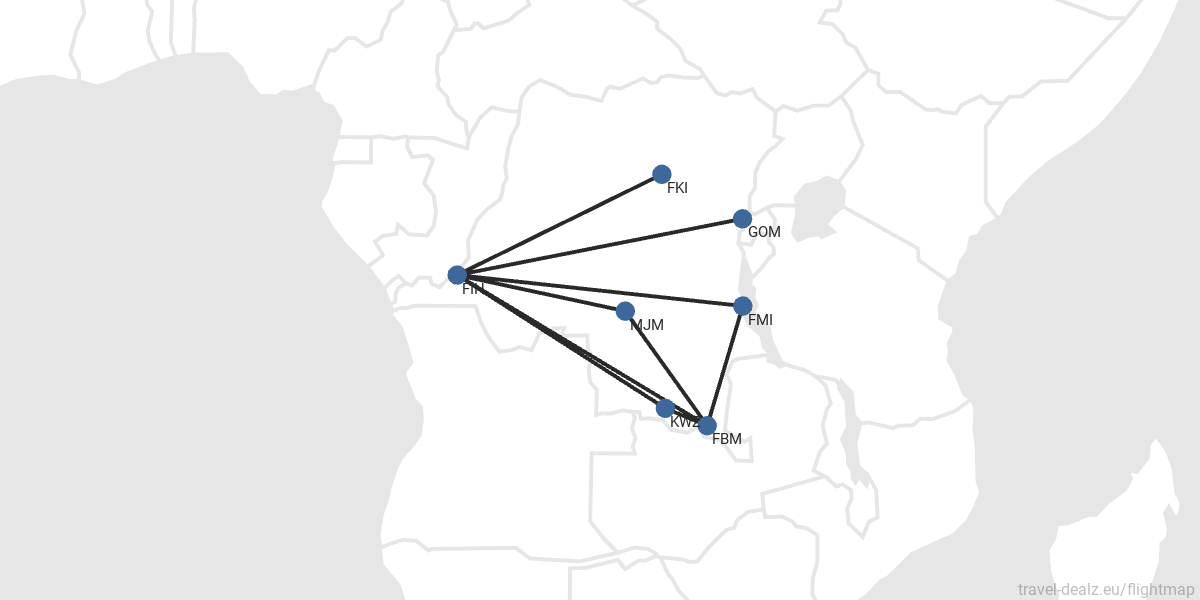Air Congo and Ethiopian Airlines: Transforming Air Travel in the Democratic Republic of Congo
The Democratic Republic of Congo (DRC) has introduced its new national airline, Air Congo, as part of a public-private partnership with Ethiopian Airlines. The goal is to revitalize national and international aviation in a country with significant potential for air connectivity.
Air Congo operates under a scheme where the DRC government owns 51% of the shares, while Ethiopian Airlines holds 49%, contributing technical and operational expertise. Currently, the airline operates with a Boeing 737-800, and a second aircraft is expected to join the fleet in the coming months. Ethiopian Airlines has committed to providing two additional aircraft within the first six months of operations.
In the next four years, Air Congo plans to expand its fleet to eight Boeing 737s and two Boeing 787 Dreamliners, connecting Kinshasa with major international destinations such as Paris, Brussels, Dubai, Johannesburg, and Luanda.
For now, the airline is focusing on the domestic market, with daily flights from Kinshasa to key cities such as Lubumbashi, Goma, Kisangani, and Mbuji-Mayi, in addition to weekly routes to Kalemie and Kolwezi. By June 2025, the airline plans to operate with four aircraft and expand its network to neighboring countries.
Partnerships with Ethiopian Airlines
Ethiopian Airlines, Africa’s largest airline, will play a crucial role in the development of Air Congo. The collaboration includes the establishment of a local flight school, a Boeing-certified maintenance center, and a commitment to training and hiring local talent. This model follows Ethiopian’s precedent with other African airlines such as ASKY Airlines in Togo, Zambia Airways, and Malawian Airlines.
The creation of Air Congo has raised questions about its coexistence with Congo Airways, another state-owned airline that resumed operations in November with aircraft under a wet-leasing agreement with KrasJet. The Deputy Prime Minister and Minister of Transport, Jean-Pierre Bemba Gombo, clarified that both airlines can coexist due to the extensive domestic market, which includes 53 potential destinations within the country.
Modernization of Congo’s Airports
With Air Congo’s entry, backed by an investor like Ethiopian, there is a need to improve Congo’s airports, which suffer from infrastructure and airport security issues. Additionally, it will be the third airline operating jet aircraft in the DRC, competing with Congo Airways and Compagnie Africaine d’Aviation (CAA).
To support the growth of its aviation sector, the DRC government is investing in the modernization of strategic airports, including N’Djili International Airport in Kinshasa and major terminals such as Mbuji-Mayi and Kolwezi. These upgrades aim to attract new airlines and strengthen the country’s connectivity.
Additionally, aviation safety remains a central concern. The Democratic Republic of Congo has experienced tragic incidents in the past, affecting perceptions of air travel in the country. Airlines must not only comply with international safety standards but also actively commit to improving their operations.






Comentarios
Para comentar, debés estar registrado
Por favor, iniciá sesión